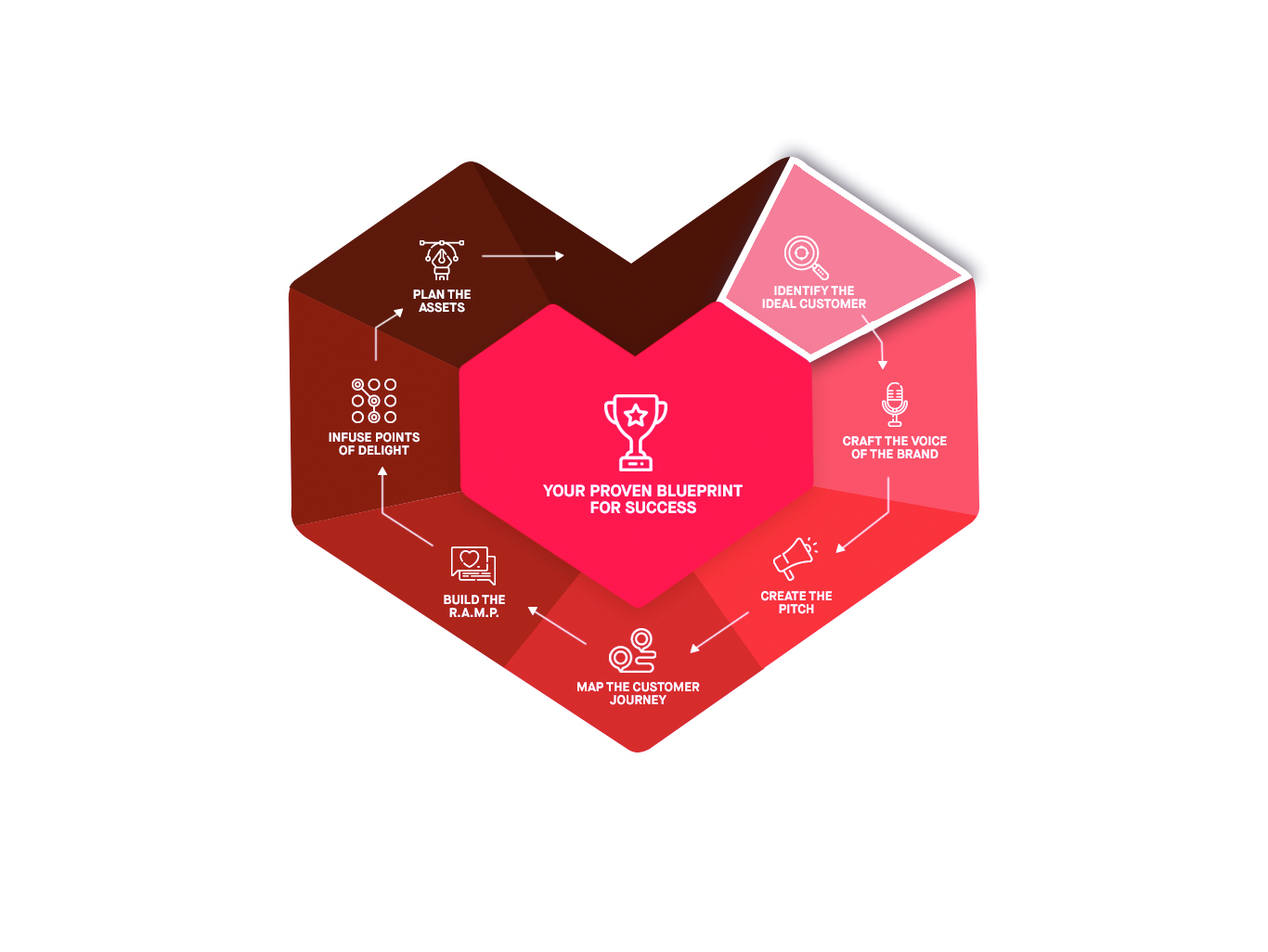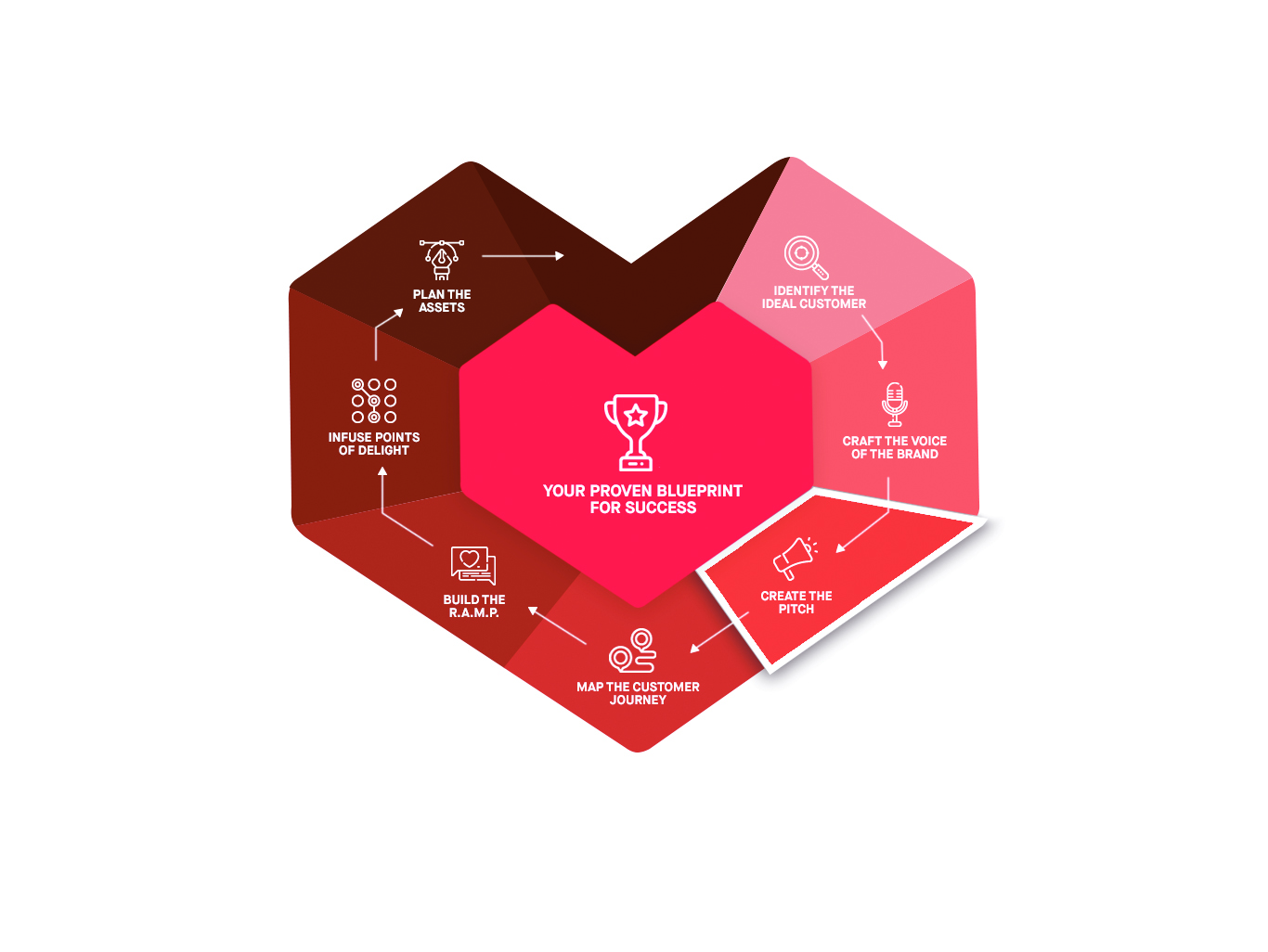It’s a brand new year and we need a new plan for business marketing.
The world has changed dramatically since COVID.
Political views and beliefs surrounding the pandemic are dividing people, rather than uniting them. News over the last 12 months have shown grim scenes filled with death, riots, severe weather events, global warming, terror and political unrest.
People are tired.
From daily routines that were interrupted to the huge disruptions in systems across the world, every aspect of life has been touched and turned upside down.
Including how people shop.
And including how they perceive and interact with your brand.
The start of the pandemic in early 2020 led to online shopping skyrocketing, pushing us faster and deeper into the digital world. An article released in Accenture summed it up:
“Consumer adoption of technology-enabled commerce is likely to deepen and broaden permanently. Values-driven buying behavior accelerated by this crisis will become the norm.”
This, of course, has gone well for those who already had an established online presence (such as ecommerce 90% of whom have seen their online sales increase), and for those who had the resources — and wherewithal — to migrate.
But it has not been without its challenges.
COVID also led to disrupted supply chains, poorly staffed customer service experiences and other obstacles that have a big impact on customer engagement and perception of one’s brand.
One reason for this difficulty in business marketing in this increasingly digital world is that the consumer is faced with endless choices.
Ads track what we search for, cookies track the sites we visit, and then we’re served even more options around every bend.
This creates more competition for businesses and more options for customers.
Unfortunately, the current way most businesses and marketing managers do digital marketing, sales, and online experiences is nothing like how humans actually interact with each other.
Too many digital marketing efforts take customers out of context, shoving irrelevant and ill-fitting messaging at them.
For example, in an article by Verizon about email and ad banner blindness, they found:
68% of consumers don’t trust information on brand insights
70% of consumers don’t trust sponsored search results
80% of consumers don’t trust company emails
82% of consumers don’t trust social media posts
With that much mistrust and those many options, how can brands who are marketing digitally break through the noise in an online world and find a way to win their ideal customer’s attention this year?
A hint can be seen in the Accenture article referenced earlier:
“[Businesses] that are most adaptable to change will be best positioned to ride out the immediate challenges and build stronger, more customer-centered businesses.”
Customer-centered business is the key.
To pandemic-proof and recession-proof and overwhelm-proof your business, you must focus on your ideal customer 100%.
You must build trust and infuse delight into customer experiences with your brand before, during, AND after they buy or use your product or service.
And in my 20+ years of business marketing and brand experience, the best way to do so is by implementing the Marketing RAMP®. This is a foundational marketing process I developed after witnessing traditional marketing campaigns fail time and time again because they don't know HOW to keep the customer front and center. It took me 10 years of fine tuning, but now I have a solid solution: the Marketing RAMP®, a dynamic strategy designed to behave like humans.
The foundation for Ramp Marketing lies within its 7 Pillars that give shape to a complete marketing blueprint. The pillars all work together to identify your customer’s pain points and desires, your competitive advantages (your “secret sauce”), and your brand voice and messaging.
This allows you to know exactly what you need to say to your ideal customers so they’ll want to do business with you.
To demonstrate how powerful Ramp Marketing can be, today’s training is going to be an overview of the first 3 pillars.
These are:
1. Identify the Ideal Customer
2. Craft the Brand Voice
3. Create the Pitch
Interested in the RAMP? Try Our Marketing RAMP® Software!
Our software will guide you through the RAMP build process almost as if you were working directly with my team.
Register for free today and you'll also get unlimited access to our online Learning Center!
As I’ve mentioned above, a brand’s target audience, or “ideal customer” is the lynchpin to all digital marketing campaigns.
If you don’t clearly identify your ideal customer, your messaging and all your business marketing will fall flat.
This is why I keep “Identifying the Ideal Customer” as the very first step in Ramp Marketing. To really know your ideal customer — and you might have up to 4 — there are a few vital areas to consider in defining them.
Demographics:
Age range and gender, where applicable
Marital status/kids/pets
Annual household income
Location
Level of education
Interests:
What do they want?
How do they perceive themselves?
What is their lifestyle like?
What is their ideal success?
Who or what influences their decisions?
Pain Points:
What problem/obstacle are they facing? (There can be more than one!)
Experiences:
Have they tried to fix these problems before and failed?
How will purchasing your product or using your service make them feel?
What is the buyer seeking? And what is the buyer actually saying?
By really digging into each of the ideal customer realms above, you'll be able to get inside the minds of your customers to understand their every pain point and desire.
Pretty powerful stuff. Because once you know that, you'll have a crystal-clear idea of how to focus your messaging and narrow your digital marketing efforts in a meaningful way.
Crafting the brand voice via Ramp Marketing is no small endeavor.
I’ve done a deep dive into it before (click here to read the article), but before you even begin to think about the form of your sentence structure or adding personality to your communications, you must build a strong foundation.
A shortened summary of what we do in the Marketing RAMP® for crafting the brand voice is below.
Company Core Purpose:
Why does your company do what it does?
Why does it matter?
What do you want to be known for?
Customer Alignment:
What do your customers value?
How does your brand align with their values?
What are your customers' objections to the sale? e.g. cost, time, difficult-to-understand?
How does your brand solve these objections?
What have your customers' previous attempts to solve their problem looked like?
How does your brand assure them your solution is different?
Process & Transformation:
What are the easy steps to success? How does a customer get the results they’re looking for in 3 steps or less?
What is happening with your ideal customers’ “internal talk track” as they mull over their options? The “internal talk track” are the questions your prospects are asking themselves, and that need to be answered, before they buy.
What content do buyers want to consume before purchase? What do they need or want to know?
What does life look like for your ideal customer before and after buying your product or service?
Your Secret Sauce:
When can your customers expect to see results? How does this compare to your competitors?
How does the price of your products or services measure up to your competition?
What makes your product or service unique from your competition?
What notable innovations have you made?
Only after you establish these factors should you start to think about the structural guidelines for your brand voice.
These guidelines include:
Brand Voice Guidelines:
How your brand will speak to your customers
How you will explain/communicate your ideas
How you will add personality to your communications
And, of course, what you will NOT do
Within the Marketing RAMP®, I’ve created a special Brand Pitch “formula” to make creating the pitch as straightforward as possible.
And if you’ve completed the in-depth research into your ideal customer and brand voice that’s outlined above, you’re halfway there!
Before I tell you what a strong pitch contains, first I’ll tell you what it is not.
A killer pitch is NOT a tell-all exclusive about your business, a deep dive into its history, or a complex explanation of why you do what you do...
The aim of a brand pitch is to summarize how your brand can help your ideal customer find success in a way that engages who you’re talking to, and makes them want to develop a relationship.
Ideally, your brand pitch is succinct and the solution you present is clear.
And the pitch serves as more than just a saying you can repeat to someone who asks “what do you do?” It can act as the springboard from which all your marketing messaging develops.
The pitch can be the consistent narrative that builds trust and keeps your focus on the customer, and your digital marketing on point.
And if you’ve come this far, then defining your brand pitch won’t take much more work.
All you need to do is tie together the below details into a short narrative.
The Short Narrative
Who you are
Who you serve
What they need
How you solve their needs
How your solution is better than alternatives
Once you have the answers to those prompts, you use the information to write a 30-second or less spoken pitch.
For example, this is what my agency has created as the pitch for the Marketing RAMP®:
To succeed, you need a dynamic, intelligent, and powerful 21st century blueprint for success.
The Marketing RAMP® creates an all-inclusive master plan focused on your customers’ experience, maximizing revenue, and driving growth.
What makes this pitch powerful is that it focuses 100% on the ideal buyer (business owners) and what they need.
It provides context for what the Marketing RAMP® is and provides the specific positive results.
Note that it doesn’t explain every detail of Ramp Marketing, its history, or its process — because it’s not supposed to.
Remember, the pitch isn't a tell-all. It is designed to engage the person who hears it, and spur them to want to learn more.
In Conclusion
With these 3 Pillars defined and explained, this wraps up our training: “New Year's Plan to Pandemic-Proof Your Business.”
The most important takeaway is this: Businesses who focus on the customer in their digital marketing will be the ones who prevail.
Look for me sharing specific RAMP Marketing Tips here every month that will help you do exactly that.
Likewise, I'm here to help and provide support and guidance where needed.
If you have any questions about what you just read or want insight about implementing the Marketing RAMP® into your business, please contact my team and I today.























